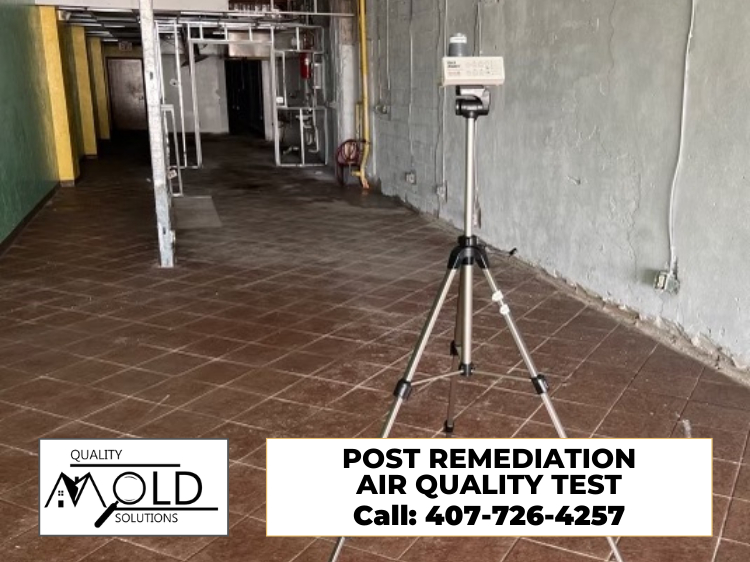Mold remediation is a crucial step in maintaining a healthy indoor environment. However, it’s equally important to verify the effectiveness of the remediation process through post-remediation mold testing. This blog post aims to shed light on the significance of post-remediation mold testing, the process involved, and its role in ensuring a mold-free environment.
Importance of Post-Remediation Testing:
Completing the mold remediation process doesn’t guarantee the elimination of all mold spores. Without thorough testing, there’s a risk of mold recurrence, compromising indoor air quality and posing health hazards to occupants. Post-remediation testing provides assurance that the remediation efforts were successful and that the environment is safe for habitation.
Understanding Post-Remediation Mold Testing:
Post-remediation mold testing involves comprehensive assessment to determine the effectiveness of remediation efforts and the absence of mold contamination. Here’s an overview of the process:
1. Selection of Testing Locations:

Qualified professionals strategically select sampling locations based on various factors, including the extent of contamination, type of mold, and areas prone to moisture accumulation. Common sampling sites include areas previously affected by mold, adjacent spaces, and areas with potential moisture issues.
2. Air Sampling:
Air sampling is a standard method used to assess mold spore levels in the indoor environment. During post-remediation testing, air samples are collected using specialized equipment such as air pumps and cassettes. These samples are then analyzed to determine the concentration of mold spores present in the air.
3. Surface Sampling:
Surface sampling involves collecting samples from various surfaces within the property. This method helps identify any remaining mold growth or spores that may have settled on surfaces post-remediation. Samples are typically collected using swabs, tape lifts, or contact plates and analyzed in a laboratory for mold species identification and concentration.
4. Visual Inspection:
Alongside sampling, a visual inspection is conducted to assess the cleanliness and condition of remediated areas. This step ensures that visible mold growth has been adequately removed and surfaces have been properly cleaned and treated to prevent mold recurrence.
5. Laboratory Analysis:
Collected samples are sent to accredited laboratories for analysis by trained professionals. Laboratory testing provides precise quantification of mold spore levels and identification of mold species present, aiding in evaluating the success of remediation efforts and confirming compliance with industry standards.
6. Interpretation of Results:
Once the laboratory analysis is complete, the results are interpreted by experienced professionals. They compare the findings against established guidelines and standards to determine whether the indoor environment meets acceptable mold levels for occupancy.
7. Documentation and Reporting:
A detailed report summarizing the findings of the post-remediation testing is prepared and provided to the property owner or manager. The report includes test results, interpretation, recommendations, and any necessary follow-up actions to maintain a mold-free environment.

